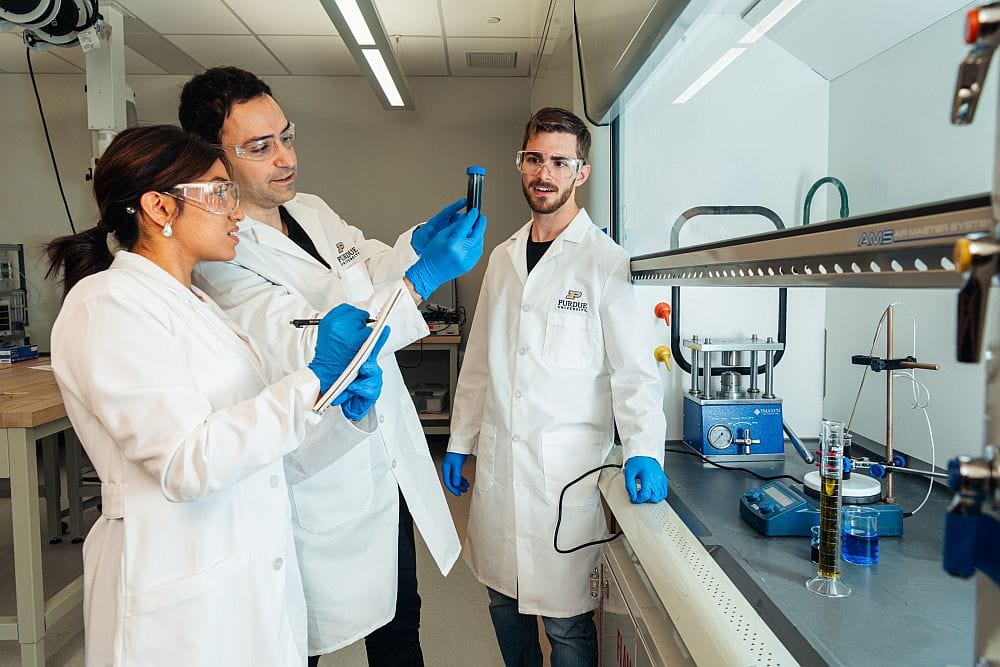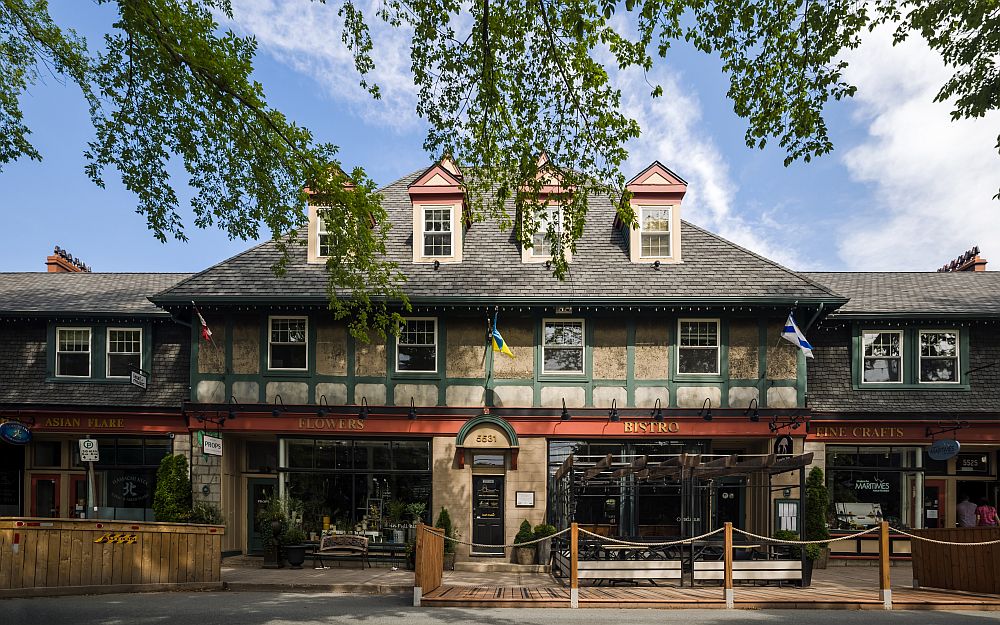
[Image above] Boston’s Back Bay is renowned for its Victorian-era red brick buildings. The buildings remain a major influence on contemporary brick design. Credit: NayaDadara / Shutterstock
From the ancient ziggurat to the modern skyscraper, brick has been used for millennia to define the character of our cities. It has remained a popular building material due to its unique combination of durability, low material cost, and aesthetic versatility.
As our understanding of brick’s composition and physical properties continues to grow, interest in its use as a building material has evolved beyond its durability to focus on its insulating qualities and sustainability.
In this final part of our special three-part brick series, we will explore the post–Industrial Revolution innovations in brick architecture and technology and highlight the critical need to preserve the historical brick structures that give our cities their souls.
The first part looked at the relationship between local geology and modern brick cities. The second part overviewed the use of brick in ancient cities.
The modern cityscape: Chicago School of Architecture
The advent of iron and steel frames and reinforced concrete changed the role of brick in architecture, from structural to ornamental. No city exemplifies this fortuitous pairing more than the city of my father’s people: Chicago.
The brick industry in Chicago arrived with Henry Lampman in 1833, by way of the Erie Canal. This material played a key role in the steel-frame construction prized by the first Chicago School of Architecture, a significant architectural movement from the late 1870s to World War I.
Steel-frame construction was a new technology in the 1880s. It allowed for unprecedented height and open floor plans, which enabled the buildings’ expansive interiors to evoke their prairie surroundings.
The use of brick was a critical and inseparable part of this development for several key reasons:
- Fireproofing: The Great Chicago Fire of 1871 was a catalyst for the movement. The city’s postfire building codes mandated the use of noncombustible materials. Brick was the most reliable, affordable, and readily available material for this purpose.
- Practical and aesthetic: While the steel frame provided the skeleton, brick provided the skin. Architects of the Chicago School used brick to clad their new skyscrapers. This design choice served both a practical purpose (protecting the steel from fire and the elements) and an aesthetic one, as architects used brick to create the detailed facades that defined the style. The Rookery Building, for example, has a striking exterior of brick and terra cotta. The Monadnock Building is the tallest load-bearing brick building ever constructed.
- Cultural tradition: The use of brick connected the radical new skyscrapers to a familiar material. Architects such as Louis Sullivan and Daniel Burnham used intricate details to give their tall, modern buildings a sense of human scale.
In essence, the steel frame gave the Chicago School buildings their height, but brick gave it its texture, detail, and identity in the post-fire era. This style was a deliberate break from historical European influences. The Chicago School architects aimed to create a uniquely American architectural form that was both modern and rooted in its geographical context.

The Rookery Building exterior at the corner of LaSalle and Adams in the Loop downtown business district of Chicago. Credit: ChicagoPhotographer / Shutterstock
Meeting urban needs with brick
In contemporary architecture, brick is being rediscovered for its immense aesthetic and functional potential. Architects are increasingly using brick to add texture, color, and character to facades, with a nod to historic styles such as brick Expressionism in Hamburg, Bristol Byzantine, the historic Amsterdam School’s decorative brickwork, and Lisbon’s azulejo tiles.
Beyond buildings, brick’s durability and modularity make it an ideal choice for urban infrastructure. It provides a long-lasting and easily repairable surface for city streets and plazas, a practice perfected in the Netherlands with its extensive use of brick pavers (called klinkers).
Brick’s contemporary relevance is also underpinned by ongoing innovation. Institutions such as the National Brick Research Center at Clemson University are modernizing the industry by conducting research on sustainable manufacturing methods and new material properties. This work helps ensure brick remains a viable material for future urban development.
Bricks for a sustainable city
Today, the story of brick is shifting from its industrial past to a more sustainable future. This evolution is happening through manufacturing methods, cutting-edge materials science, and historic preservation.
Manufacturers are now developing more efficient kilns and processes that require less fuel. A key innovation is the use of waste materials in the clay mix. By incorporating industrial byproducts such as fly ash (from power plants) or recycled glass, brickmakers can reduce waste and lower the firing temperature, significantly cutting energy use and carbon emissions.
The ultimate sustainable act might be preservation. Repurposing an existing brick building rather than tearing it down to build something new saves materials, time, and labor. It also recycles the building’s embodied energy—the total energy invested in a building’s creation—and reduces demolition waste. These benefits make historic preservation an inherently green practice.
Cities such as Columbus, Ohio (German Village); Boston, Mass. (Beacon Hill); Richmond, Va. (The Fan); and Cincinnati, Ohio, have campaigned to save and revitalize their historic brick districts. The Dutch Garden in New City, N.Y. (originally built with Haverstraw bricks) was partly restored with recycled bricks.

Budd Dairy Food Hall in Columbus, Ohio, is situated in the historic Budd Dairy Company building, a former milk processing and distribution facility. The space was renovated beginning in 2018 and opened to the public in April 2021. Credit: Eric Glenn / Shutterstock
The future of brick
Innovative advancements are transforming brick design and functionality. Bio-bricks, for instance, are created through various nature-based “growing” processes at room temperature, eliminating the need for high-temperature firing entirely. Likewise, 3D-printed bricks offer a way to create custom, high-performance masonry with minimal waste.
This blend of tradition and innovation is exemplified by the Haverstraw Brick Museum’s educational series called “Learn the Past, Discover the Future.” Their first study was a collaboration with the Pratt Institute to examine how 3D printing can enable the building of structures for humans that will live in harmony with nature.
The second study looked at new ways to assess brick quality and properties. They discovered a method of judging a brick’s density and strength by its sound—a low-tech method that harkens back to the skills of master brickmakers who could distinguish a quality brick by its clear, ringing sound.

Researchers at the University of Cape Town used bacteria to turn sand and urine into bricks. Credit: Robyn Walker / University of Cape Town
The city’s enduring character
Bricks have shaped human civilization from its earliest days. From ancient mud-brick settlements to the monumental structures of the industrial age, this simple material has been the foundational building block of our cities and societies.
Today, as we face new challenges of sustainability and urban preservation, the role of brick continues to evolve. The human stories of our cities are literally written in their walls, and by understanding the past and present of this versatile material, we can ensure its future.
Getting involved—ACerS Structural Clay Products Division
The American Ceramic Society was founded in 1898 at a convention of the National Brick Manufacturers’ Association in Pittsburgh, Pa. While the Society has grown to encompass many advanced ceramic applications, the Structural Clay Products Division pays homage to the Society’s roots by helping advance the most efficient and economical manufacturing practices for structural clay products.
Brickmakers and other structural clay product manufacturers can help support the Structural Clay Products Division’s mission by joining ACerS. Learn more about individual and corporate membership options, and remember that new members can join for FREE their first year through ACerS Associate Membership.
We thank the Haverstraw Brick Museum for their insightful and educational content, which guided the writing of this series.
Author
Becky Stewart
CTT Categories
- Construction
- Education


